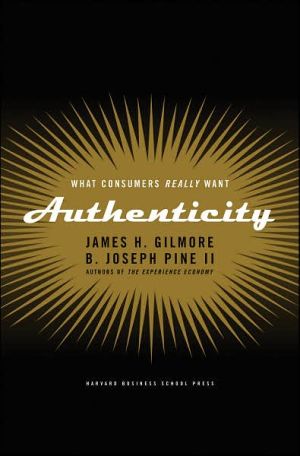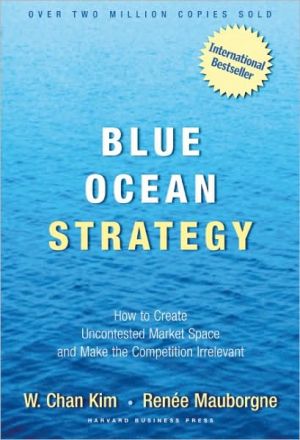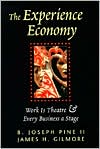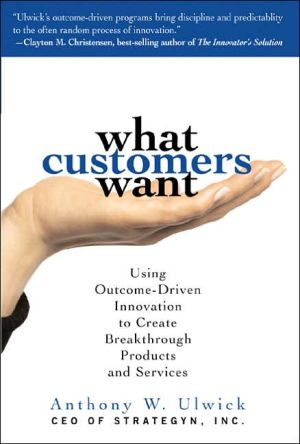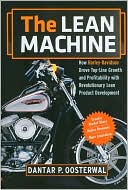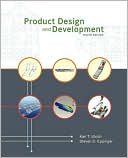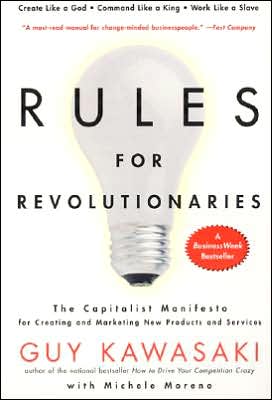Authenticity: What Consumers Really Want
Contrived. Disingenuous. Phony. Inauthentic. Do your customers use any of these words to describe what you sell-or how you sell it? If so, welcome to the club. Inundated by fakes and sophisticated counterfeits, people increasingly see the world in terms of real or fake. They would rather buy something real from someone genuine, rather than something fake from some phony. When deciding to buy, consumers judge an offering's (and a company's) authenticity as much as-if not more than-price,...
Search in google:
Contrived. Disingenuous. Phony. Inauthentic. Do your customers use any of these words to describe what you sell-or how you sell it? If so, welcome to the club. Inundated by fakes and sophisticated counterfeits, people increasingly see the world in terms of real or fake. They would rather buy something real from someone genuine, rather than something fake from some phony. When deciding to buy, consumers judge an offering's (and a company's) authenticity as much as-if not more than-price, quality, and availability. In Authenticity, James H. Gilmore and B. Joseph Pine II argue that, to trounce rivals, companies must grasp, manage, and excel at rendering authenticity. Through examples from a wide array of industries as well as government, non-profit, education, and religious sectors, the authors show how to manage customers' perception of authenticity by: •Recognizing how businesses "fake it"•Appealing to the five different genres of authenticity•Charting how to be "true to self" and what you say you are•Crafting and implementing business strategies for rendering authenticity The first to explore what authenticity really means for businesses and how companies can approach it both thoughtfully and thoroughly, this book is a must-read for any organization seeking to fulfill consumers' intensifying demand for the real deal. AdWeek . . . people crave genuine and authentic product experiences in a world that is increasingly commercialized and fake.
Preface xiAuthenticity: The New Business Imperative 1The Appeal of RealThe Demand for Authenticity: Why Now? 9Drivers of the New Consumer SensibilityThe Supply of Inauthenticity: What's Going On? 31Reality, Fakery, and Three Axioms of AuthenticityRendering Authenticity: What to Do 45Five Genres of AuthenticityFake, Fake, It's All Fake: Why Offerings Are Inauthentic 81Lessons from PhilosophyThe Real/Fake Reality: How Offerings Become Authentic 95Two Time-Honored Standards of AuthenticityDeconstructing Authenticity: How to Assess Your Business 115Ten Elements of AuthenticityFrom Marketing to Placemaking: Being What You Say You Are 147The Placemaking PortfolioFrom Strategy to Decision Making: Being True to Self 179Here-and-Now SpaceFinding Authenticity: The Right Direction for You 219Real/Fake PolaritiesNotes 253Acknowledgments 283Index 287About the Authors 301
\ The Globe and MailJust as beauty is in the eye of the beholder, so is authenticity. Companies seeking to present an aura of authenticity can come off looking like fakers. And sometimes reality and fake can be so intertwined it's hard to separate them.\ \ \ \ \ AdWeek. . . people crave genuine and authentic product experiences in a world that is increasingly commercialized and fake.\ \ \ Publishers WeeklyThis eye-opening but muddled volume tells companies to "remain true to self" or, at least, to appear genuine, arguing that "in a world increasingly filled with deliberately and sensationally staged experiences... consumers choose to buy or not buy based on how real they perceive an offering to be." Everything that forms a company's identity-from its name and practices to its product details-affects consumers' perceptions of its authenticity. Juggling philosophical concepts, in-depth case studies and ad slogans, Gilmore and Pine (The Experience Economy) run into trouble with a chapter called "Fake, Fake, It's All Fake," which eviscerates the entire idea of authenticity: "Despite claims of 'real' and 'authentic' in product packaging, nothing from businesses is really authentic. Everything is artificial, manmade, fake." The argument is unexpected and perhaps brilliant-yet rather confusing, since most of Authenticityargues that businesses should strive to not only appear authentic but to be so. The book's bullet points, charts and matrices add to the tangle, as the authors' early advice ("your business offerings must get real") becomes a demand for furrowed-brow soul-searching. Still, the prose is snappy and conversational, and the book is densely packed with insights and provocations, and may inspire some executives to consider how consumers see their company. (Nov.)\ Copyright 2007 Reed Business Information\ \ \ \ \ Library JournalIn a way, this is a sequel to the authors' 1999 best seller, The Experience Economy: Work Is Theatre & Every Business a Stage, also building on the premise that people aren't satisfied with commodities anymore-they want an experience (i.e., the entertainment and memories that surround the act of using a product or service). The twist here is the difference between the real and fake experience, and the book provides many examples of what that means and why it matters. This theme is part of a broader movement expressed through books such as Robert Scoble and Shel Israel's Naked Conversations: How Blogs Are Changing the Way Businesses Talk with Customers.Like Authenticity, these books don't focus on the products or services themselves but on how they are made, discussed, and experienced; the movement is away from products and toward the consumer's imagination and needs. Libraries with the luxury to collect observations about the latest trends should examine such books more closely. Authenticityis a branding book of sorts but from a completely different angle than other books on the topic. It is ideal for business school libraries, especially those with an emphasis on marketing and product development.\ —Stephen Turner\ \ \
